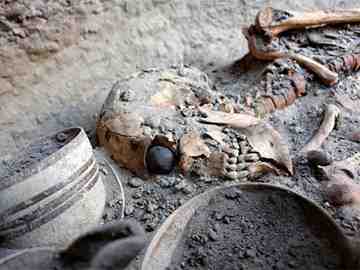 The reconstructed version of the 5,000-year-old skeleton was unveiled during a ceremony attended by head of Iran's Cultural Heritage, Handicrafts and Tourism Organization Hamid Baqaei and Iran's ambassador to Italy Seyyed Mohammad-Ali Hosseini.
The reconstructed version of the 5,000-year-old skeleton was unveiled during a ceremony attended by head of Iran's Cultural Heritage, Handicrafts and Tourism Organization Hamid Baqaei and Iran's ambassador to Italy Seyyed Mohammad-Ali Hosseini.The woman, whose face has been reconstructed by a group of Iranian and Italian researchers, is famous for carrying the first prosthesis to have been used by man, ISNA reported.
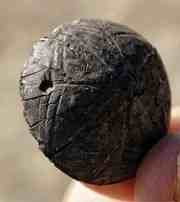 This is a great scientific achievement which shows that Persians used innovative medical equipment 5,000 years ago, Baqaei said during the opening ceremony of the exhibition.
This is a great scientific achievement which shows that Persians used innovative medical equipment 5,000 years ago, Baqaei said during the opening ceremony of the exhibition.The unique discovery was the result of excavations in the Burnt City in 2006, when archaeologists found an artificial eyeball on a 1.82-meter- tall female skeleton, much taller than ordinary women of her time, and dated back to between 2900 and 2800 BCE.
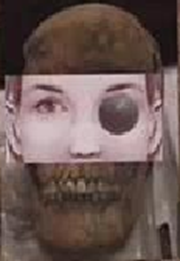 The eyeball had a hemispherical form with a diameter of just over 2.5 cm and was made of very light material. The surface was covered with a thin golden layer, engraved with a central circle to represent the iris.
The eyeball had a hemispherical form with a diameter of just over 2.5 cm and was made of very light material. The surface was covered with a thin golden layer, engraved with a central circle to represent the iris.The eye was held in place with a golden thread, which went through tiny holes drilled on both sides of the eye.
Microscopic studies showed that the eye socket bore imprints of the golden thread, which suggest that the eyeball had been worn during its owner's lifetime.
Italian archaeologist and researcher with Rome's National Museum of Oriental Art Professor Lorenzo Costantini said that the face of the artificial eyeball's owner has been reconstructed using computer programs and criminology science.
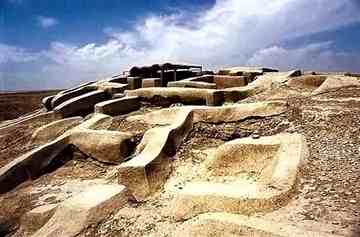 Head of the Burnt City archeology team Seyyed Mansour Seyyed Sajjadi greatly contributed to the joint Iranian-Italian projecthe added.
Head of the Burnt City archeology team Seyyed Mansour Seyyed Sajjadi greatly contributed to the joint Iranian-Italian projecthe added.The Burnt City is located near the city of Zabol, in the southeastern province of Sistan-Baluchestan and is considered Iran's largest prehistoric site.
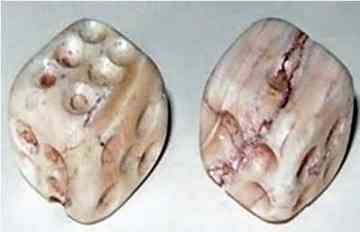 Spanning more than 300,000 hectares, the site dates back to 5,200 years ago. Four civilizations have lived in the city which was burnt down three times and not rebuilt after the last fire.
Spanning more than 300,000 hectares, the site dates back to 5,200 years ago. Four civilizations have lived in the city which was burnt down three times and not rebuilt after the last fire.The world's oldest animated picture, a dice and backgammon set, and the earliest known caraway are among the most significant discoveries at the site.
Source: Payvand [November 24, 2010]